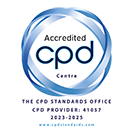7 February 2017
Chemical, Medical and Social History of Cocaine
Organised by:
SCI's London Group in partnership with UCL's Chemical & Physical Society
UCL, London, UK
Registration Closed
This event is no longer available for registration.
Synopsis
Native populations of South America have been familiar for centuries with the invigorating effects of chewed coca leaves, however, it was only in the mid-1800s that chemists began to take an interest in isolating pure cocaine, the substance responsible for its psychotropic effects, and later determining its structure. Its use as the first local anaesthetic revolutinised dentistry, and knowledge of its structure led to the synthesis of yet safer and more effective agents such as Novocaine. There was no stigma associated with cocaine's use in tonic wines and for personal consumption until the early years of the 20th century, but press-led campaigns eventually led to its classification as a Class 1 Dangerous Drug. This talk, as the title suggests, covers its chemical, medical and social history and concludes with a brief consideration of the harm it does to society, contrasting this 'harm' with the damage done by the consumption of other chemical agents such as alcohol, tobacco, LSD and other drugs.Programme
Accessibility Grants
SCI accessibility grants are available to support SCI members with disabilities, long term health conditions, those who require a carer, and members who are nursing parents to attend SCI events. Download an application form to apply for a grant.
Venue and Contact
UCL
Department of Chemistry
University College London
20 Gordon Street
London, WC1H 0AJ
Emma Thomas
Tel: +44 (0) 20 7598 1594
Email: communications@soci.org
Fees
This is a FREE event. No need to book. Please check this page for any updates or changes before attending the event.
Become an SCI Member and save on this and future events
See Membership OptionsSign up as an Event Member to join this event. SCI Full or Student Members receive discounts on event registrations
Booking Process/Deadlines
CPD Info
All delegates attending this meeting are able to claim CPD points.





